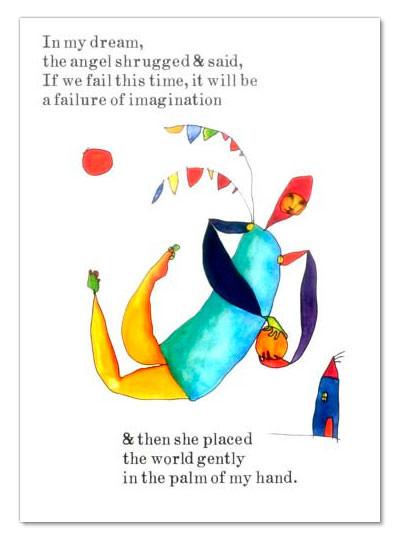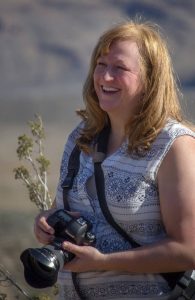The Everyday Genius of Your Artistic Voice: Part 5, Art&Business
I decided that this series called for a big fat “Art&Business” section. Why? Because soooo many questions come up around this in general – even so more when folks try to reconcile “artistic voice” and how NOT to sell out when attempting to shift from hobbyist to entrepreneurial business maven.
The Gap
The biggest concerns seem to circulate around the gap that this belief system generates: it’s all fine and dandy to talk about “artistic voice” putting your soul into your art… until it comes to business. Then (so sayeth said belief system) you better get serious, because now you’re in competition. You have to have clients. You’re there to make money. And (my fave)… no one makes money in photography! I’m exhausted and entertained all at the same time by this.
😴😂
I’m not going to sit here and tell you how hard it is to make money in photography or ANY entrepreneurial business. There are plenty of people out there whose job it is (apparently) to make you believe it’s impossible, so you might as well just give up. *Yawn*
What I WILL share this with you, from Storypeople:
If you’re looking at creating an income stream with your photography, know this: your artistic voice is your guiding light, your compass, your uniqueness, your divining rod of truth, your determiner of “what’s next” and up-with-which-you-will-not-put should you find yourself up against a wall, your constant source of imagination and wonder that informs your art, life AND business. Without that in place, you’re hosed.
I think where this whole concept goes sideways for people is in that gap between “for fun” and “for money”. Nobody talks about that pivotal bit. There IS a way to bridge the two… but you have to get the path, the vision for it straight in your own head, then stay focused on it like your life (and business!) depended on it. Because it kinda does!
For your consideration today, Part 1 of 2 sit-downs I had with the awesome Lauri Novak. Who, even as we speak, is creating her newest career – in photography – her truest artstic voice intact – from the ground up.
This one’s a bit longer than usual… 20 minutes… so let’s get going!
Click the play button to listen to THIS week’s blogcast about “Art & Business” with Lauri Novak…
Transcription
(Created – and edited – in record time at Temi.com)
Introductions
Karen:
Hey everybody! And welcome to Episode 5 of The Everyday Genius of Your Artistic Voice. The 8-part series that begins the journey of connecting your inner voice – you know that inner flame, that inner spark of divine fire into the practical world of photography that you are involved in – at whatever level.
Today’s episode: “Art Into Business” is about imagining a business or any professional level of photography created from the point of view of what you love, of who you are – and how you see the world at whatever level. So today is very exciting. I have a guest! I have the awesome the incredibly talented and always thought-provoking Lauri Novak. Hey Lauri!
Lauri: 00:50
Hi Karen!
Lauri Novak
Karen: 00:51
You may have read her articles over that photo focused on her blog at LauriNovak.com or just her many social posts. This woman is everywhere! I don’t know how she does it. I really don’t. And she’s been actively engaged in this artistic voice process, then figuring out where she wants to take her photography – and now is doing it professionally. And so I thought it would be awesome to get her input on our topic today. And what makes Lauri even more unique is her marketing background. Which is super helpful if you’re considering making a move into the pro world at whatever level. I don’t necessarily mean as in; quitting everything and starting photography. I mean just even testing the waters. Having some kind of knowledge about marketing and promotion is a really great thing. And if you don’t have it, you can get it. Now that’s a beautiful thing. I love it. So some of the things Laurie will be sharing are useful for anybody who wants to be more recognized for their work at whatever level. And I thought her insights would be perfect to begin this part of our conversation.
Lauri: 01:59
I’m very excited and very grateful that you asked me to be part of this.
Karen: 02:04
Well, you are the first person I always think of on this topic, because you’re doing so many interesting things in such an interesting way – and successfully – that you’re just perfect for anyone interested in this topic.
Lauri: 02:20
I am excited to do this too, because part of what I love to do is help others. This falls in that category.
Karen: 02:28
Yeah. It’s kind of boring to keep it all for yourself isn’t it?
Lauri: 02:33
Yeah it is. I agree
Which Category are you?
Karen: 02:34
And it’s fun to light a fire. I want to begin by saying that most of you listening probably fit into one of these three categories:
- A budding photographer. You’re just starting, maybe you’re taking iPhone photos – which is great – point is, you’re just doing it for yourself. Maybe you’re just starting to try and find your artistic voice – and figure out how it all connects with your soul and your heart. That’s a beautiful thing! This conversation is for you too!
- Maybe you’re a hobbyist. You’re not putting yourself out there professionally yet, but you’re growing. You’re expanding your skills, you’re expanding your reach, you’re exploring. Right.
- And number three: you’re a potential or current professional photographer already making some money. Perhaps you’re selling a print now and again – you want to sell more prints because that’s usually where most people start. You’re wanting to grow your own business, but you’re trying to figure out how to do it from an artistic voice point of view without losing your soul in the process.
The Foundation
Karen: 03:38
So we want to talk about how we bring the flame, the foundation for taking the leap into whatever your next level is. But particularly into the professional realm so as to deflect the doubts, the fear, the worry and the other opinions that will happen along the way. That is an important reason to deliberately and lovingly developing your artistic voice, as well as the confidence that goes with it. I mean, don’t you find that to be true Lauri – that you have to have your your foundation, your base level strong and in place before you start out?
Lauri: 04:11
Absolutely. I think you have to know who you are and how you want to get yourself out there as yourself. There are people who post amazing images all day long, but you don’t know who posted the image. And that goes back to your style photography. Not necessarily genre – but your voice, as you say, comes through all of that and it should come through in what you’re doing as well.
Karen: 04:35
It’s just through the images you’re talking about…?
Lauri: 04:37
Yes, but I think it should also come through in what you’re doing as a business… what you’re selling and how you’re selling it. As well as how you’re putting your stuff out there. It should also reflect who you are. Be authentic.
You Are Always Selling
Karen: 04:47
Right. And again, some people might listen to this and say “Well I’m not selling anything!” I want to say to you: if you’re online and you’re putting anything out there, if you’re having conversations with people about anything at all – you’re selling yourself. Not in a bad way. But the thing is; I don’t care where you go and what you do; interacting with people is selling yourself. You want people to listen to you. You want people to recognize you and the value of what you have to offer. In that sense we’re always selling. My premise though, is that the inner stuff is really important. It’s your compass for all that happens on the journey.
I’ve talked about that a lot, even prior to this series. Sometimes people say: “Oh that’s all you talk about.” And, well no. I’m actually engaged in a bigger picture. Right now, it means establishing a baseline, a foundation for all that comes next. And that takes a fair amount of repetition. You have say the same thing in different ways about a million times to get an idea across before it sticks.
Look, before you even start thinking about your social profile, or putting yourself out there, you knowing what your artistic voice is, what your point of view is – is key. So we start there. But comes the time when we have to implement all of it through action. You know this one, Lauri – I used to say this to you even a couple years ago. Focus and action.
Lauri: 06:06
Every little step, yeah.
Your “Why?” – And The Feedback Loop
Karen: 06:07
And so having the focus to know your “Why?”. Why am I doing this. What is it I really want to say? – and what’s the best way to do it? And then.. take action. Because only by taking the action, putting it out there, doing whatever it is that’s next for you with your grand vision; only by taking the action do you establish the feedback loop that gives you the information you need to know what to do next and whether what you’re doing is working. Then you take another action and you get more feedback. And so on. Rinse and repeat.
I wanted Lauri in here today to talk about how the verifying, confirming, altering your approach based on what you just learned, etc. within your business – or within your expansion program – I wanted her to talk about how that has worked for her and some of the things that she has learned along the way. Lauri, you’ve taken the leap of doing it just for yourself into the business world, what, in the last year or two years?
Take Action
Lauri: 07:07
Yeah, I’d say a couple of years. I mean I kind of dabbled in it before, by putting images online to sell and seeing how that worked, just to try it. But in the process over the last couple of years, I’ve continued learning more about my art. Learning more about what I enjoy shooting, what I don’t enjoy shooting. And how it works together with how I’m feeling about it all. I gave some things a try. I joined a local art club, joined some art fairs, exhibited a couple of local galleries, worked for a studio for about eight months shooting preschool kids. I worked for a photography conference. I’ve taught. And from all of those things, I’ve gathered what I like and what I don’t like and what works for me and what doesn’t work for me. It’s all part of the process of finding out you know who you are and what you really want to do.
Karen: 07:58
One of the things I really admire about you is how you’ve gone about all of this. One of the reasons why I wanted you to come here and share your experience is that many times, people engage in a process like this and they just confuse themselves, because they listen to people who say “Well, you have to do it this way. You have to work for a studio for so long. And then you have to do ___ (fill in the blank.)”. And people are confused and wonder; “DO I have to do that?” Just like Q&A episode I did a little while back. The question was “DO I have to choose only one genre?”
Genres Emerge
From a business point of view. sometimes you do. But ideally, they emerge with you. I know you’re finding your architectural photography is gaining a foothold right now. You tell me if you think this is about right, but my observation is that you’ve tried all these things, you keep putting yourself out there – and suddenly, the architectural work was what broke through. That’s how specificity works – and helps you – when you begin a business. And for you, that’s how it happened; it emerged.
Lauri: 07:58
Yeah, it did. It did. It’s funny if I think back though, because I’ve always had an interest in architecture even when I was young. So it makes sense that it happened that way.
Karen: 09:01
Well it does. but it makes sense because the way you did it. Going back to artistic voice – my observation was that you started shooting architectural and found that it felt really good.
Lauri: 09:10
Right. Right. I’m drawn to it it. It’s like I can’t help it because it’s there – in me.
Karen: 09:17
And yet, you could as easily have looked around and said “Wow there’s a lot of people that shoot architecture! Who am I? I’m not going to be seen. What’s the big deal about my work?”
Lauri: 09:17
Right. And I did say that! And I still say those things, and I’m trying not to say those things anymore. But that’s part of the process of gaining confidence in what you’re doing.
And Then…
Karen: 09:34
And then you’re asked to write. And all of a sudden you’re seen as an expert because you’re being recognized more. Adobe shares…
Lauri: 09:42
… shared one of my architectural tips articles that was on Photofocus.
Karen: 09:48
So, writing for Photofocus has been a big thing.
Lauri: 09:49
Yeah, yeah and that just started in June. Kind of crazy.
Karen: 09:52
And that’s yet another reason I wanted Lauri to talk to you guys! Because it’s all happening now. It’s like… boom! It’s been happening in the last couple of months in a new way, but as a result of the process that I’m talking about in this series. So yeah. Things evolve. And that’s been part of Lauri’s feedback process as she creates – and correct me if I’m wrong – but you create from what you love. You put it out there. You get a certain kind of feedback and then, depending on what it is you want to create next, you create some more see what that does. You test all along the way.
Lauri: 10:23
Yeah exactly what I’ve been doing.
Marketing -Take Baby Steps
Karen: 10:25
You have a background and – particular talents – that apply to anything – in the marketing and networking realm. I mean, you’re exceptionally good at it. People – if you don’t have that already, just get educated. There are so many ways to do that. So Lauri, what are some of those things you’ve done in social media? I know you’ve been involved in communities – you know, all that kind of stuff.
Lauri: 10:45
Well, I think social media is what started it for me. I know people say Google Plus is dead, but whatever. I was on Google Plus right out of beta, I believe. And that was the biggest photography community out there. It helped me learn more about my photography, but also connect with photographers from all over the world. I became involved. Again, you put yourself out there, you post, you get feedback from people. Sure it’s social – but it also becomes the thing where you’re asked “Wow! How did you do that?” People ask questions and I made myself available to answer those questions. Or to make comments on other people’s images and interact. But because of Google Plus, I’ve met people online and in person. I became someone that other people knew they could trust and count on, or ask a question of. And I would answer! I wouldn’t be like ” I don’t have time for you”, or you know “I’ll get back to you”, then never get back to them.
Lauri: 11:33
I was authentic. It’s who I am. It grew into people asking me questions. I had my own mentorship program because of that. So that’s another way people know who I am now, because I’ve taught a couple of mentorship programs. Getting involved with the Arcanum and meeting Karen. We also met in person because of that. She introduced me to people. I mean, networking works in pretty much any business. But the thing is, you can’t go meet somebody ,or go to a conference, or go somewhere and like sit in the corner. I mean you can, but it’s not going to do anything for you if you do that. And the other part of it is just to keep putting yourself out there.
It’s Not Field Of Dreams
Lauri: 12:10
I always joke that it’s not the Field of Dreams. We can’t just build it and they will come. You have to put it out there. You have to market yourself. You have to show up. You have to participate. And if you’re not putting yourself out there you’re not making connections… well, then your work’s not being seen. And nobody’s going to know what you do or how you can help them. You know you have to do the work.
Karen: 12:29
I always this about pursuing this line of finding your artistic voice: It goes so much deeper than just making better photographs. You start showing up as a person who speaks authentically, really inhabits (your work, art and business) with love and with connection people feel that. And people want that. That’s the part that is so healing for other – is to encounter those who inhabit that point of view and want to share it. It’s really, really powerful – no matter what you do.
Lauri: 13:00
Yeah I agree.
Karen: 13:02
You talked about showing up in person. You know, back in the Google Plus days we did a lot of photo walks. There are still some going on and I think those are always good. You talked about conferences. So how important do you really think those things are? That’s a thread from what you spoke about earlier that I think is worth going into a bit more.
Connect In Real Life
Lauri: 13:18
Yeah I think it’s very important. Again it depends on what you want to do with your work. I kind of have a leaning towards teaching and helping others, so by being involved in photo walks and conferences it puts me in touch with people. I actually run a monthly photo walk here in Chicago. It’s part of an international group called Drink ‘n Click. It’s social, but it’s also developing the thing where I know people and people know who I am because I’m running it. They know that I’m going to be there there and willing to help. Or “Hey, let’s get some people together!” If people want to go out and shoot something in particular, I’ll try to make it happen.
By doing those things, obviously it’s networking as well. You meet other people you meet the person who runs the whole entire international Drink ‘n Click group – and because of those kinds of things, I’ve gotten to be like an ambassador for a print lab because they sometimes sponsor our walks. They see you involved. They see that you have followers, or that people look up to what you’re doing, or they watch what you’re doing. So then, they want to use you, basically, to help promote their products. That’s part of it.
Lauri: 14:20
I was down at Photoshop World this last May. I was headed back to my room to take a nap. Levi Sim, who is one of the editors at Photofocus is like “Lauri! Come on a photowalk with us! And I’m like “No, I’m really tired – I don’t want to do that.” And then I thought in my head; “You have to go do this because this is LEVI SIM! He’s the editor of Photofocus!”

Because You Never Know…
Lauri: 14:39
You never know what can happen. So what happened was this: he asked me why I wasn’t writing for them. And now I am. Because of attending past conferences, I had met him, he knew who I was – and it all kind of unfolds. But it doesn’t unfold magically! You have to be there, you have to interact and engage with people to make that happen.
Karen: 14:57
I remember when that happened! It was late at night – and you’re not a late night person, so it was kind of a big decision. You really did have to sort of slap – well, not slap yourself – but I mean say to yourself “Hey what’s your vision? What is it you’re really trying to do here?”
Artistic Voice In Action
Karen: 15:08
And that’s why having a “Why?” is so key. That’s why knowing who you are, what your point of view is, what stand you want to make in the world and in your business – or just in your photography and the art part – helps you decide whether to suffer through late night photo walk or not. I mean that’s a simple decision but that’s an example of how weaving your artistic voice and who you are into simple, practical, everyday decisions all work together. Therefore you didn’t feel like you were suffering – you actually expanded and had a wonderful thing happen. And you had a great time and it was awesome!
Lauri: 15:08
Yeah, it was a lot of fun. I met some other photographers who I’m friends with now. It’s part of the process, the knowing. I was able to make that decision right right away, without being like “Oh no I can’t!” I was able to not make excuses. I just made the decision and went.
Karen: 15:56
And I know that when I first met you you talked yourself out of a lot of things.
Lauri: 15:59
Yes.
Karen: 16:01
And it wasn’t until you started to get all artistic voice-y with yourself and your life, vision and focus that you started stepping up to these opportunities and not talking yourself out of all of them.
Lauri: 16:13
And that’s thanks to you as well.
Karen16:15
Well, I may have presented the idea at the right time – but then other people did too. I’m not taking credit for it! You were the one who actually DID it.
Lauri16:23
OK.
Karen16:24
We’ve got to wrap this up here in a couple of minutes, but I do want to say: we’re going to continue this next week with more specifics. We just wanted to get this part of the conversation bubbling first.
Being Strategically Selfish
Now, you talk a lot about supporting others in the industry being approachable. You’re very strategic. Very strategic. And yet it’s always held up to the standard of what you love.
Lauri: 16:48
Yes.
Karen: 16:49
And again, that’s artistic choice at work in action in the world. Now, you often say “I’m being really selfish here”. And I thought that’s a really good thing to bring up. You’ve got to be selfish. But you know, there are two kinds of selfish. (The kind where you take care of yourself – and the kind where you simply mow down everything and everyone in your path). So let’s define what we mean by selfish. Before I say anything – because I tend to say things- tell me what you mean by selfish.
Lauri: 17:12
Well, actually this a while ago when I went through a personal tragedy. And there’s being selfish and there’s being selfish. You have to take care of yourself. You have to love yourself. You have to be true to yourself first before you’re any good at anybody else. And that applies to what I was going though, so it’s a similar process. I was very selective about what I did, what I signed up for, who I aligned myself with. And I did those things thinking; “What’s in it for me”… but not in that way where I’m going to take advantage of whatever it was, or whoever it was. The criteria was: does this work with where I was going and what path I was on. It was about “What is this going to do for me to help me get where I want to go?”
Clear Vision
Karen: 17:12
I think being supremely clear and supremely specific about your vision, what you love, what you stand for, what means something to you allows you to very effortlessly make certain decisions. For instance, if some of these specific decisions are: ” I want to be an artist.” “I want to be paid for my work.” “I want to be recognized.” and “I want to be in galleries but added to that; “I also have an avenue where I want to help people”. In my own business, I love to speak. I like to write. I like to create original content. I love my (Photographic) work. I want my whole fine art side to be strong – and I like to help people too. So I have these arms to my business and what it stands for – and so does Lauri.
So any decision then that comes in about “Will you do this?” “Will I do that?” We each have to hold it up against against this standard, this mind map, or this model for the grand vision for what this will all be down the line. In this way, you create your future self, your future business, the way you want it, the way you love it. Design that – and then work backwards so that every decision you have to make in the now is held up to what is on the continuum that gets me here. That’s the selfish part. But in this way, the selfish part is also built around helping others. Everybody wins when you go for what you love.
Lauri: 19:20
Yes. Yes exactly.
Karen: 19:21
The other kind of selfish is where I want to be successful and I don’t care who I gotta mow down to get there.
Lauri: 19:28
Yeah, right. Very self-serving.
Karen: 19:30
Self-serving – and in an exclusionary way as opposed to an inclusionary way. The inclusionary way has to be really clear, because otherwise you might find yourself doing stuff for everybody else except yourself. So the clarity and the specificity is key to keeping this whole train on track. And Lauri, you’re doing such a masterful job of it. I really got to hand it to you – it’s really, really exciting to see.
Lauri: 19:55
Thank you. Hey I appreciate that.
The Wrap Up
Karen: 19:57
We’re going to wrap this up now – but we have more! Lauri will be joining me next time as well. This is clearly a big topic. So next time, we have more to share with you – as well as a very specific 7 tips to get yourself out there in the art world without losing your soul. So I hope you’ve enjoyed this episode. I want to thank Lauri for being here for both of these. You’re so appreciated… Thank you.
Lauri: 20:25
Thank you. Thank you very much.
Karen: 20:26
And if you guys have questions, answers, thoughts, real life stories you want to share – anything! Please feel free to share them down in the comments. I read every single one – and try to answer every single one as well. I love hearing your thoughts and I so appreciate your being here. So, till next time photograph with your soul and we will talk to you next time! Bye guys!
LINKS MENTIONED IN THIS EPISODE:
Lauri Novak’s Website
Storypeople
Adobe Features One of Lauri’s Images on Social Media
Lauri Featured on Photofocus
Drink ‘n Click
Photoshop World
Temi.com
The OTHER EPISODES IN THIS SERIES:
Just catching up? Here are ALL of the episodes in this series:
Episode 1: Introduction
Episode 2: Preparation
Episode 3: Appearance
Episode 4: Cameras & Gear
Episode 5: Art & Business
Episode 6: Art & Business
Episode 7: Post-Processing
Episode 8: Storytelling
Extra: Q&A
STAY IN THE KNOW & PROCURE FUN FREE GOODS TOO! I HAVE A STRICT “NO SPAM, NO MA’AM” POLICY, SO YOUR INFO IS ALWAYS SAFE. 😉




